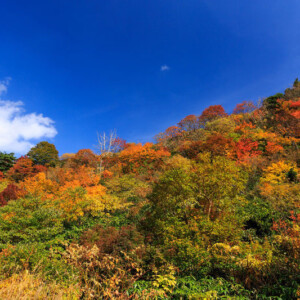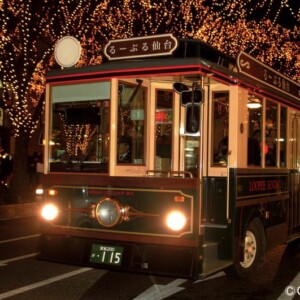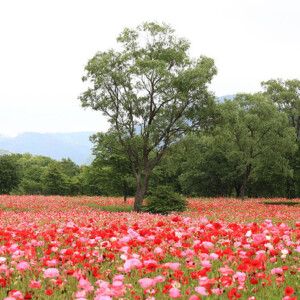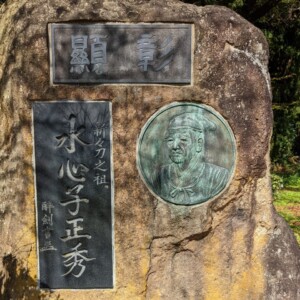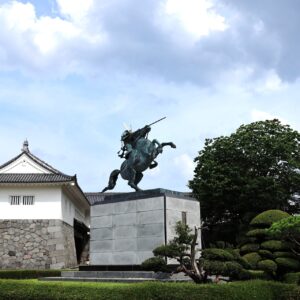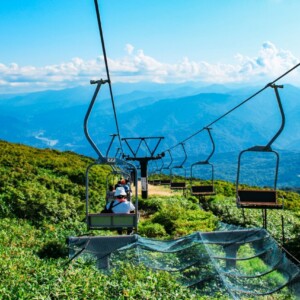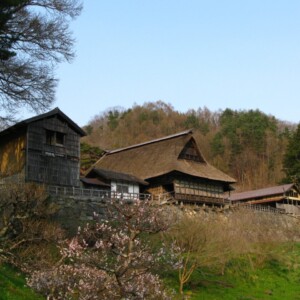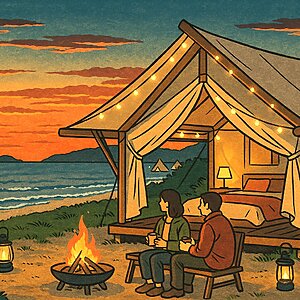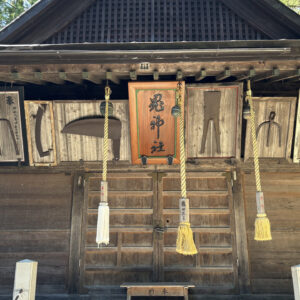
4 power spots in Morioka City! Introducing historical sites that history lovers should visit [Iwate Prefecture]
table of contents
The history of Morioka City dates back to the distant Heian period, when Shogun Sakanoue no Tamuramaro built Shiba Castle
During the Nanboku-cho period, the Nanbu clan of Sannohe (Sannohe Town, Aomori Prefecture), which was connected to the Kai Genji clan, expanded its influence southward and built Kozukata Castle, the predecessor of Morioka Castle
In 1615, during the early Edo period, Toshinao Nanbu, the 27th head of the Nanbu clan (the second head of the Morioka Nanbu family), renovated Furukata Castle to build Morioka Castle, and the castle town that formed there was the beginning of present-day Morioka City
Shiwa Castle Ancient Park (Kami-Kazuma)
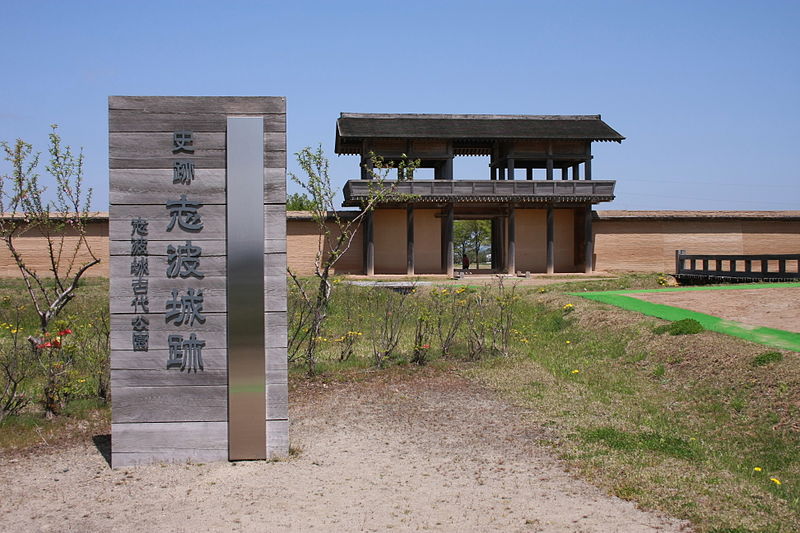
This ancient fortress was built in 803 by Sakanoue no Tamuramaro, the Shogun who forced the Emishi chieftain Aterui to surrender, to defend the northernmost tip of Mutsu Province.It is said to have been comparable in scale to Taga Castle (Miyagi Prefecture), the provincial capital of Mutsu Province
Discovered during excavation surveys for highway construction
In 1976, excavations conducted before the construction of the Tohoku Expressway revealed that the small ruins that had existed up until then were the remains of Shiba Castle, and in 1983 it was designated as a national historic site
Shiba Castle is a historical power spot that is the basis for the birth of Morioka, and is a historical site that shows that Morioka was the border between the Yamato Imperial Court and the Emishi in the early Heian period
Shiba Castle Ancient Park<Information>
- Facility name: Shiba Castle Ancient Park
- Address: 47-11 Kamikazuma Gohei Shinden, Morioka City, Iwate Prefecture
- Phone number: 019-658-1710
- Admission hours: 9:00-17:00 (Information desk, toilets, and the park are free)
- Closed: New Year's holidays
- URL: Morioka City official website
Google Map
Demon's handprints at Mitsuishi Shrine (Nasugawa Town)
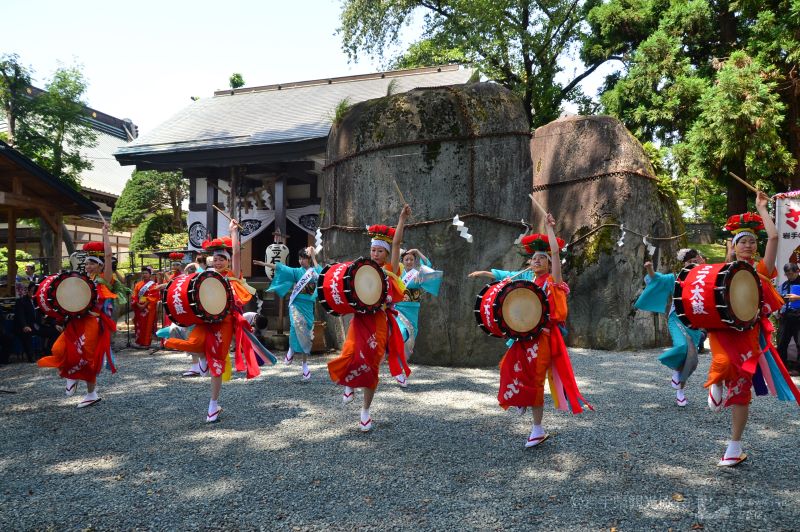
Mitsuishi Shrine, home to the "demon's handprint" that gave Morioka its nickname "Kozukata," is a power spot quietly nestled in the quiet residential area of Nasugawa-cho, which is home to many temples
In addition to the small shrine on the grounds, there are three huge rocks tied with sacred ropes and chains that are said to have been blown away by the eruption of Mount Iwate, giving the shrine its name "Mitsuishi Shrine."
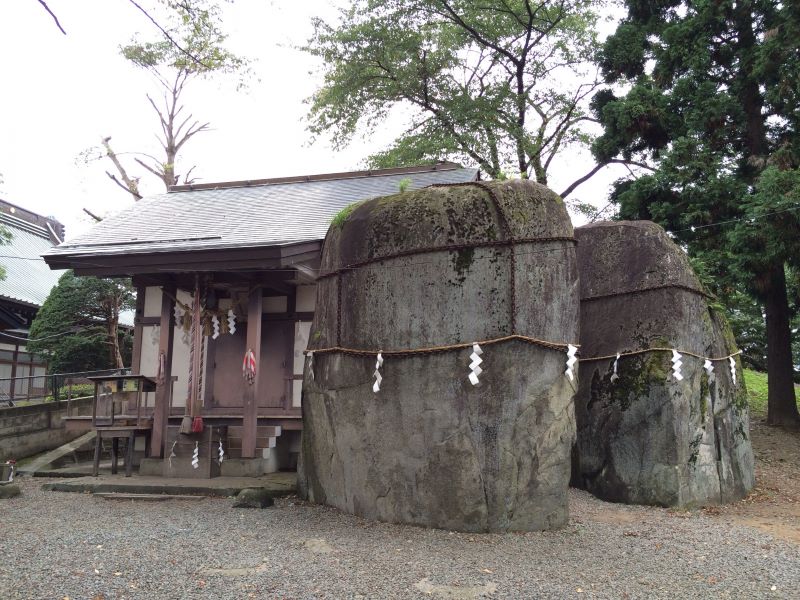
In fact, nowadays the Oni's handprint is not clearly visible and many tourists give up looking for it. In the photo, it is said to be located in the area where green moss is growing on the rock on the right side, and although the shape of the hand is unclear, it is said that this is the only area where moss does not grow
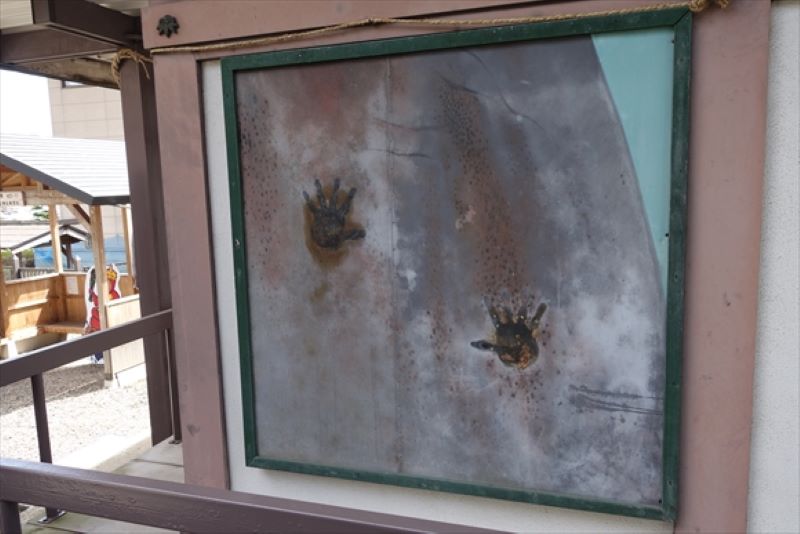
There is also a replica of the shrine from when it was still clearly visible on display, so take a look and find the one you like
The origin of the demon's handprints: "Furukata" and "Iwate"
Long ago, a demon called "Rasetsu" lived here and caused trouble for the villagers and travelers, so the villagers were at their wits' end and asked "Mitsuishi-sama" to exterminate it. The god of Mitsuishi then bound the demon to three large stones
It is said that the Rakshasa surrendered, never committed any mischief again, and fled south towards Mount Nanchang, leaving his handprint on a large rock as proof that he would never return to this land. "Furaikata" means that the demon will never come again
The generally accepted theory is that the rock came to be called "Iwate" because the demon left its handprint on it, and the villagers, pleased that the demon had escaped, surrounded the three stones and danced "Sansa Sansa" to show their gratitude, which is how the Sansa Dance began
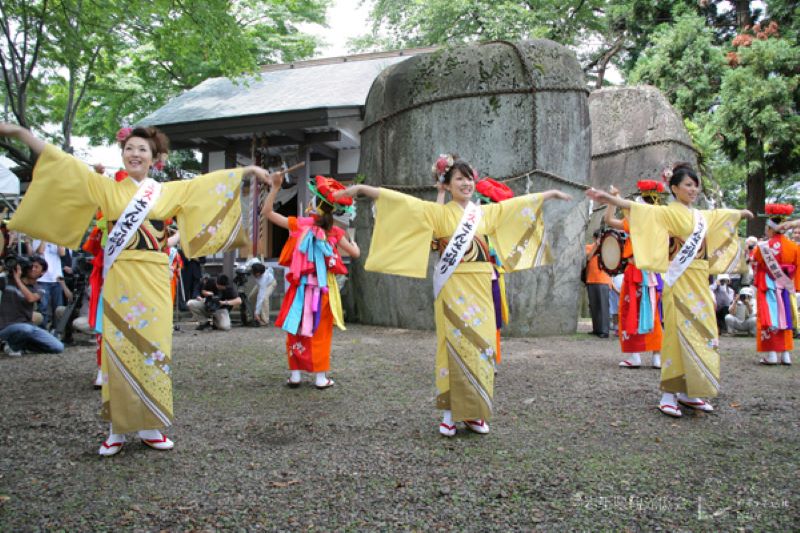
Every year, before the Morioka Sansa Odori Festival, which begins on August 1st, the Miss Sansa Odori, who is selected every year, performs a Sansa Odori dance to pray for safety during the festival
Mitsuishi Shrine <Information>
- Facility name: Mitsuishi Shrine
- Address: 2-1 Nasugawacho, Morioka City, Iwate Prefecture
- Phone number: 019-622-2061
- URL: Iwate Prefecture Tourism Portal Site
Google Map
Morioka Castle Ruins Park (Uchimaru)
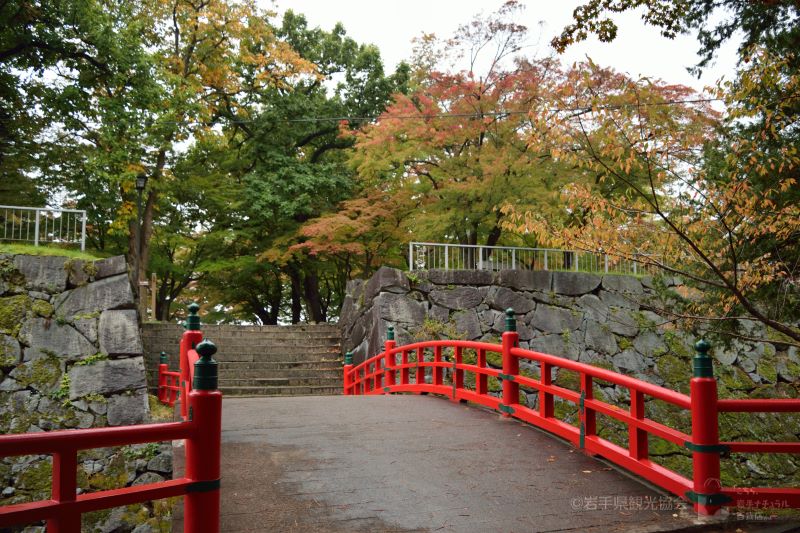
If you visit the castle town of Morioka, this is definitely a historical site you should visit
There is no castle tower or turret, and all that remains are the stone walls, castle boundaries, and a pond where the moat once stood. However, as you stroll around, you can sense the dignity of the castle as the castle of the Nanbu clan, a large domain that was considered "Nanbu territory until the crescent moon was full."
It was established as "Iwate Park" in 1906, and in 2006, marking the 100th anniversary of its opening, it was given the nickname "Morioka Castle Ruins Park." It is beloved by the people of Morioka as a famous spot for cherry blossoms in the spring and autumn leaves in the fall
Morioka City is currently collecting photographs, blueprints, and other materials from the castle tower in an effort to restore Morioka Castle
Pedestal of the bronze statue of Lieutenant Nanbu Toshiaki (former site of the main castle)
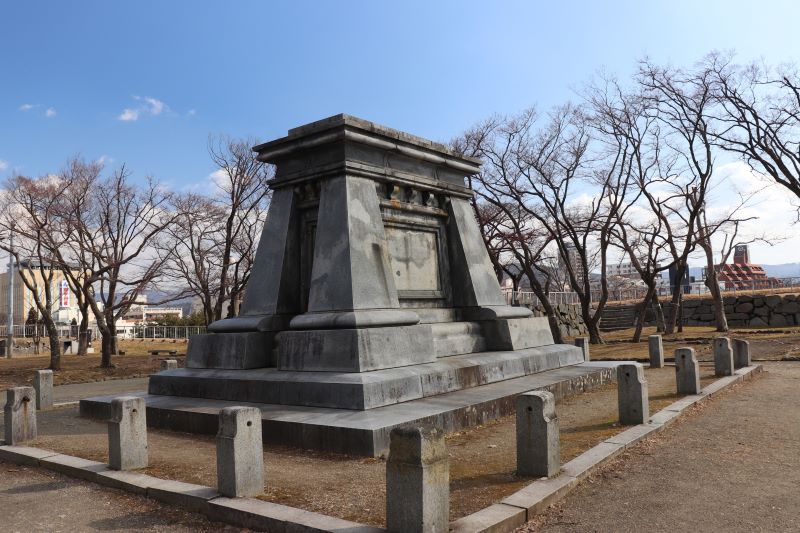
Before the Pacific War, the castle ruins housed a bronze statue of Lieutenant Nanbu Toshiaki, the 42nd head of the Nanbu family, who fought in the Russo-Japanese War but was killed in action. However, it was donated under the metal collection order during the war, and only the pedestal remains to this day, without being restored
Visit the castle ruins and see the stone monument to Ishikawa Takuboku's poem, the stone monument to Miyazawa Kenji's poem, and the stone monument to Nitobe Inazo
There are many monuments at the Morioka Castle ruins, and by touring them you can learn about Morioka's history
Ishikawa Takuboku's poetry monument (former Ninomaru castle site)
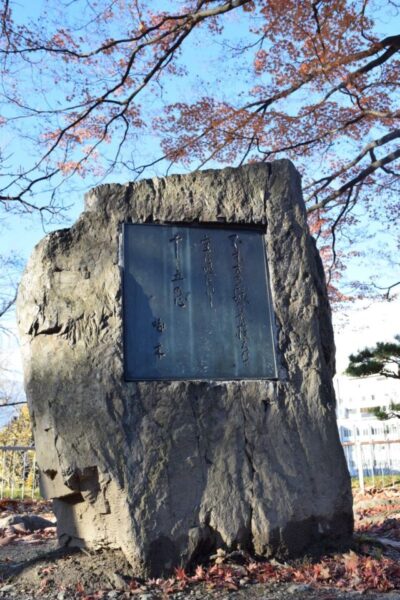
This is a monument commemorating the poet Ishikawa Takuboku, who was born in Morioka
It is located on the site of the Ninomaru bailey where Takuboku, awakened to his love of literature, is said to have sneaked out of school to read books in his younger days, and the famous poem that describes his state of mind is engraved on it: "Lying on the grass of the castle in Furukata, my fifteen-year-old heart is absorbed into the sky."
Miyazawa Kenji Poetry Monument (Former Prefectural Library Square)

Miyazawa Kenji was born in Hanamaki, but attended Morioka Higher Agricultural and Forestry School (now the Faculty of Agriculture at Iwate University)
engraved on the monument, "Far away, old Taping...the river and the green bank trees, the town quietly twilight," is a classical poem written in August 1933, one month before Kenji passed away.
Morioka Castle Ruins Park <Information>
Facility name: Morioka Castle Ruins Park (Iwate Park)
Address: 1-37 Uchimaru, Morioka City, Iwate Prefecture
Phone number: 019-681-0722 (NPO Green Consultation Room)
URL: Morioka Castle Ruins Park Official Website
Google Map
Sakurayama Shrine (inner circle)
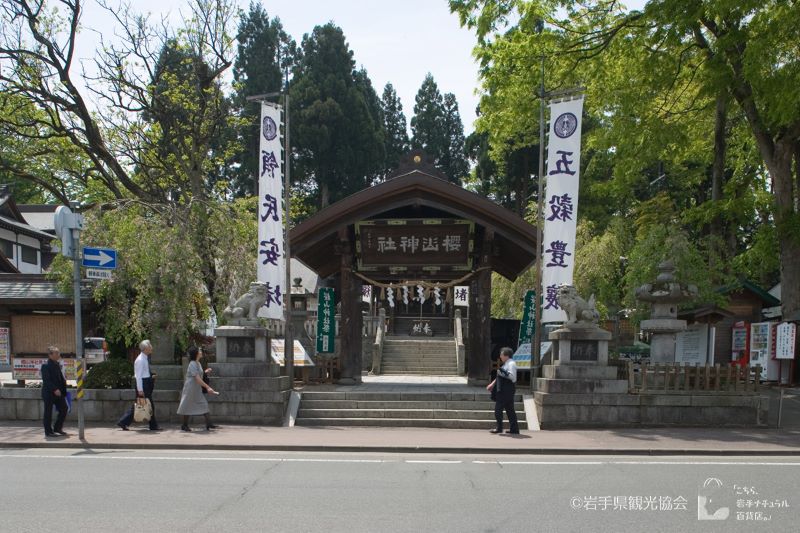
Sakurayama Shrine was built in 1749 by Lord Nanbu Toshimi, the 33rd head of the family and the 7th lord of the Morioka domain, and is still worshipped by the people of Morioka today as the main shrine of the Nanbu domain
The current main hall, worship hall, and shrine gate were built in 1899 and have been watching over Morioka for over 120 years
The deities enshrined here are Mitsuyuki, the first head of the Nanbu family, Nobunao, the 26th head of the family (first feudal lord), his eldest son Toshinao, the 27th head of the family (second feudal lord), and Toshitaka, the 36th head of the family (11th feudal lord of Morioka Domain)
Morioka Domain's talisman rock "Eboshi Rock"
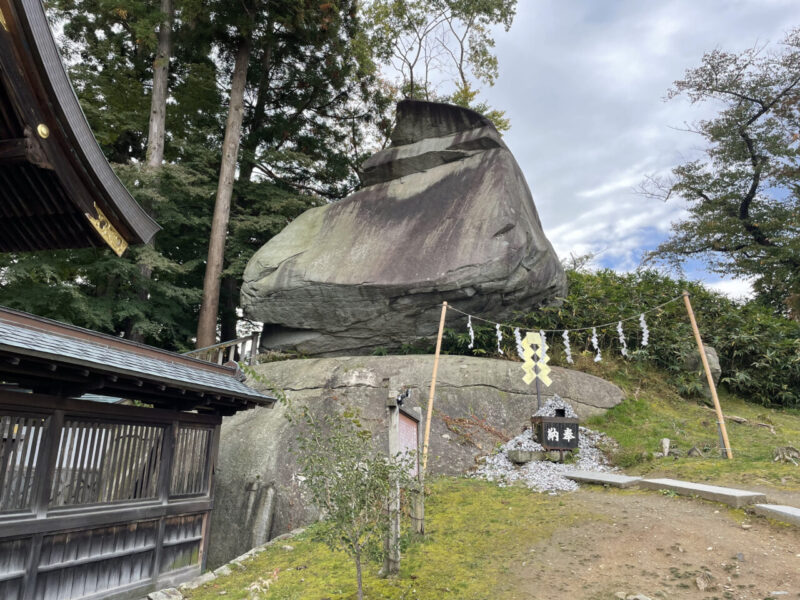
The Eboshi Rock, located at the back of Sakurayama Shrine, is a large rock that was discovered when Lord Toshinao, the 27th head of the family (and the first lord of the Morioka domain), dug down the surrounding area to build Morioka Castle
Before the excavation, there was another shrine at the same location, and because the rock came from sacred grounds, it is enshrined as the Morioka Domain's "Treasure Stone."
Sakurayama Shrine<Information>
- Facility name: Sakurayama Shrine
- Address: 1-42 Uchimaru, Morioka City, Iwate Prefecture
- Phone number: 019-622-2061
- Business hours: 9:00-20:30 (Sanshuden opening hours)
- URL: Sakurayama Shrine official website
Google Map
summary
Morioka has many other famous power spots, such Morioka Hachimangu Shrine and the 500 Arhats of Hoon-ji Temple , but in this article we will focus on the historical sites that laid the foundation for the Morioka we know today.
If you are visiting Morioka, be sure to stop by and experience the history of Morioka, the Little Kyoto of the Michinoku region


![Nanbu Bevelers are the unique residence of the Nanbu Domain, who was well aware of the importance of horses [Iwate Prefecture] 1906769_m](https://jp.neft.asia/wp-content/uploads/2022/06/1906769_m-150x150.jpg)
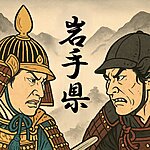
![The specialty of Genbikei, "Flying Dango," is definitely worth a visit! Delicious activities! [Ichinoseki City, Iwate Prefecture] Genbikei bus stop](https://jp.neft.asia/wp-content/uploads/2017/04/IMG_5931-150x150.jpg)
![Bottle Don is the definitive Sanriku souvenir that looks delicious! [Iwate Prefecture] Bottle don (abalone, scallop, salmon roe)](https://jp.neft.asia/wp-content/uploads/2023/06/IMG_5048-150x150.jpg)
![Ryusen-no-no-no-no-no-no-no-no-no-no-no-no-no-no-no-no-no-no-no-no-no-no-no-no-no-no-no-no-no-no-no-no-no-no-no-no-no-no-no-no-no-no-no-no-no-no-no-no-no-no-no-no-no-no-no-no-no-no-no-no-no-no-no-no-no-no-no-no-no-no-no-no-no-no-no-no-no-no-no-no-no-no-no-no-no-no-no-no-no-no-no-no-no-no-no-no-no-no-no-no-no-no-no-no-no-no-no-no-no-no-no-no-no-no-no-no-no-no-no-no-no-no-no-no-no-no-no-no-no-no-no-no-no-no-no-no-no-no-no-no-no-no-no-no-no-no-no-no-no-no-no-no-no-no-no-no-no-no-no-no-no-no-no-no-no-no-no-no-no-no-no-no-no-no-no-no-no-no-no-no-no-no-no-no-no-no-no-no-no-no-no-no-no-no-no-no-no-no-no-no-no-no-no-no-no-no-no-no-no-no-no-no-no-no-no-no-no-no-no-no-no-no-no-no-no-no-no-no-no-no-no-no-no-no-no-no-no-no-no-no-no-no-no-no-no-no-no-no-no-no-no-no-no-no- [Iwate Prefecture] Ryusendo Cave (first underground lake)](https://jp.neft.asia/wp-content/uploads/2023/07/PXL_20230512_052246926.NIGHT_-150x150.jpg)
![[Series ②: The role of the previous nine years and the role of the second three years] The role of the previous nine years is from the truce to the battle again, and the Kokufu army is struggling Taga Castle Ruins](https://jp.neft.asia/wp-content/uploads/2023/11/a0b8b1213124e7a13c7308fa81e053a2-150x150.jpg)
![[Iwate Prefecture] Soft-serve ice cream with sake, miso and wasabi flavor! Why are the soft serve ice cream eaten at roadside stations so delicious? There's also school lunches! Iwate Prefecture Catch](https://jp.neft.asia/wp-content/uploads/2025/06/915fd0ce722ab0f21e74864401170847-150x150.jpg)
![Tateishi-ji Temple, a corner of the four temple corridors, including Chuson-ji Temple, Mokoshi-ji Temple, and Zuigan-ji Temple [Yamagata Prefecture] Yamadera Risshakuji Temple](https://jp.neft.asia/wp-content/uploads/2016/09/26668581_m-150x150.jpg)
